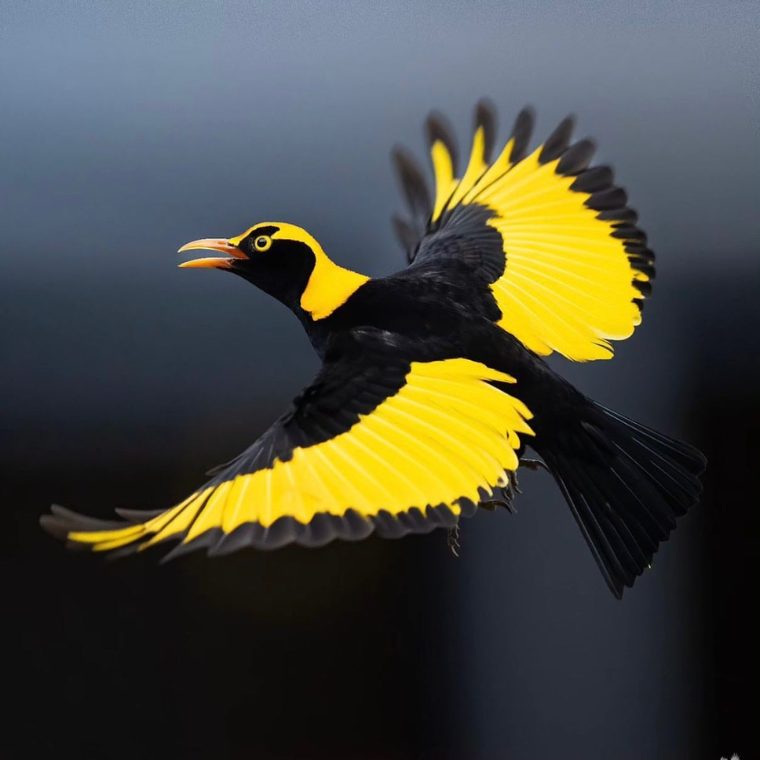The Regent Bowerbird is a small, slim bowerbird with a long, straight slender bill. It belongs to the family Ptilonorhynchidae, which includes other bowerbirds, catbirds, and gardener birds. It is endemic to Australia, where it inhabits rainforests and margins of eastern Australia, from central Queensland to New South Wales. It is named after a prince regent of the United Kingdom.

The Regent Bowerbird is a sexually dimorphic bird, with a glossy black male and a brown-black female. The male has bright gold on its head, nape, and wings, and a yellow bill and eye. The female is mottled brown, with light brown scallops on its back and breast, and a grey bill and eye. Both sexes have a yellow iris.

The Regent Bowerbird feeds mainly on fruits, berries, and insects. It forages in the canopy and subcanopy of the forest, often in pairs or small groups, sometimes with mixed-species flocks. It has a loud and harsh voice, and can produce a variety of sounds, including imitations of other birds, animals, and human noises. It has a distinctive chuckling call note, and a song that resembles a robin’s but is clearer and less nasa.

The Regent Bowerbird breeds from August to January, depending on the location. The male builds a bower and will mate with several females. The bower is an avenue-type structure made of two walls of sticks, decorated with shells, seeds, leaves, and berries. The male also mixes a blue or green paint in his mouth, which he uses to decorate his bower. He sometimes uses leaves as paintbrushes to spread the substance, representing one of the few known instances of tool use by birds. The female builds a nest made of twigs, usually away from the bower, and lays 2 to 4 eggs, which are white with brown spots. The male does not help to incubate the eggs or feed the young.

The Regent Bowerbird is a common and conspicuous bird in the summer, but may be nomadic in the winter. It is not threatened by extinction, and has a large and stable population. However, it may face some threats from habitat loss, fragmentation, and degradation, as well as from predators, parasites, and diseases. Therefore, it is important to protect and conserve its natural environment, and to appreciate its beauty and role in the ecosystem.

A rare natural intergeneric hybrid between the Regent Bowerbird and the Satin Bowerbird is known as Rawnsley’s Bowerbird. It has only been photographed twice, and has a plumage that resembles both parent species.




